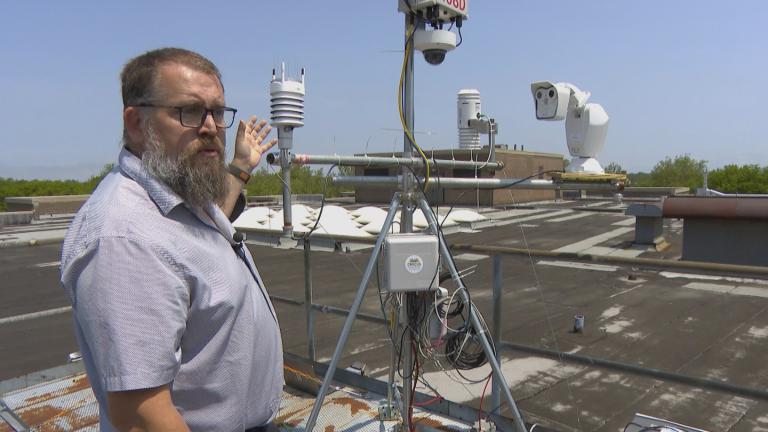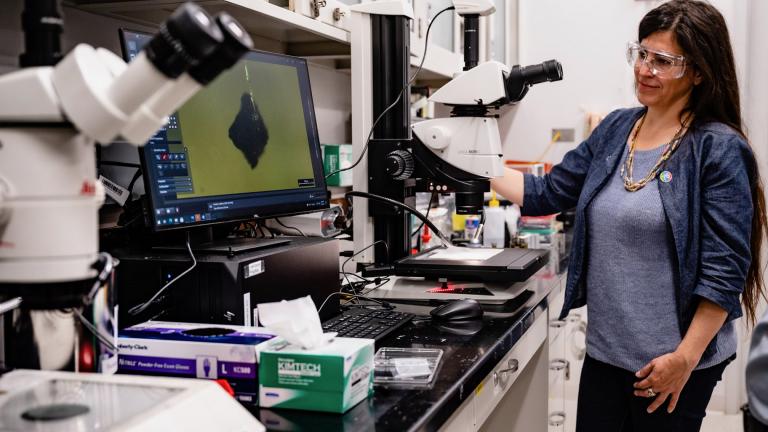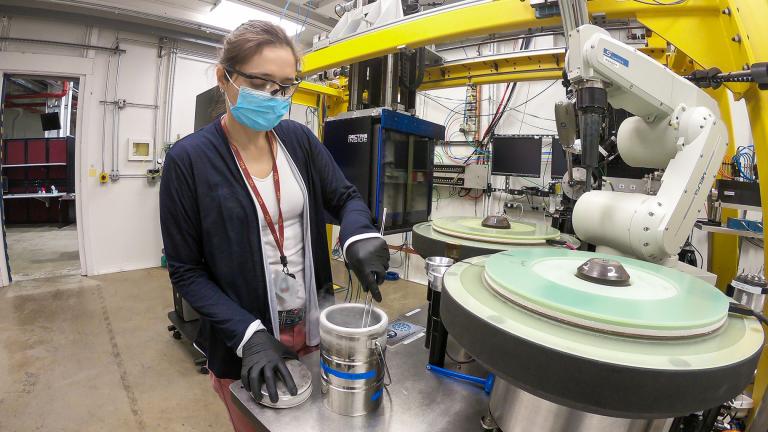Video: Project director Jim Kerby, physicist and group leader Jonathan Almer, and project manager Elmie Peoples-Evans discuss the $815 million upgrade to Argonne National Laboratory's Advanced Photon Source.
Argonne National Laboratory, located just southwest of Chicago, has been at the cutting edge of molecular scale research for almost three decades.
At the heart of that research is the Advanced Photon Source (APS), a huge particle accelerator that creates intensely bright X-ray beams a billion times brighter than a dental X-ray.
During the COVID-19 pandemic it was a crucial tool used to probe the structure of the virus to enable pharmaceutical companies to accelerate the development of effective treatments, including Pfizer’s Paxlovid.
It has also been used by researchers to develop a treatment for the ebola virus.
But after 28 years, the APS is getting a Department of Energy-funded $815 million upgrade that will take about a year and maintain its position at the forefront of molecular science.
The upgrade will replace all the powerful magnets and other equipment that accelerate and steer electrons around the vast ring of the APS to produce the X-ray beams.
“What we generate here that can’t be done any place else is produce X-rays in a way that we can probe at the molecular and atomic level,” says Jim Kerby, project director for the APS upgrade. “We can understand what’s going on in a protein molecule or what’s going on in a crystal of metal or ceramic, or some of our studies look at what happens in chemical reactions in batteries.”
That allows researchers to better understand processes at an atomic scale and thereby create more effective disease treatments, stronger materials and better batteries for electric vehicles, among other projects.
But while the current APS is already an incredibly powerful tool for scientific discovery, the upgrade will vastly increase its capabilities.
In a vast warehouse offsite, Argonne APS Upgrade Project Manager Elmie Peoples-Evans is overseeing the immense logistical and engineering challenge of pre-assembling in sections the new storage ring before transport to the existing APS facility.
“All of this equipment will be installed by the end of this calendar year,” said Peoples-Evans. “That is not the end of the project. After we’ve installed everything in the storage ring there’s test and check out. We have to commission the storage ring itself and then also integrate it with the accelerators that currently exist on site. That’s planned to end around April 2024. And after that we start bringing up the beam lines.”
The new storage ring will be made up of 1,321 powerful electromagnets, use 32 miles of power cable and some 20 miles of optical fiber.
“By replacing everything, the power supplies, the magnets, all 5,000-ish large components, we can produce a new machine that will increase the brightness of the machine,” says Kerby. “Over the course of the next year, we will install new equipment which takes the facility that’s been a jewel in the crown of light sources of the United States for the past three decades, makes it 100 times brighter and produces better X-rays for the experimentalists and enables scientific discovery for the next three decades to come.”
That order of magnitude increase in power will enable researchers to probe in three dimensions, not just two.
“Currently, the amount of X-rays we have in terms of brilliance is about one billion times more than a dental X-ray,” says Jonathan Almer, an Argonne physicist. “With the upgrade, we’re going to go to about a trillion times more.”
That will allow researchers to see the world of the very small and very fast with “unprecedented space and time resolution.”
“This will open a whole new world,” said Almer.
And data produced in experiments using the upgraded APS could be swiftly analyzed by supercomputers on site.
Argonne’s new Aurora supercomputer, capable of more than 2 billion billion calculations per second, is expected to come on line later this year and will be one of the fastest supercomputers in the world.
“Being able to probe in three dimensions, generate the data and then combine it with the supercomputer on the other side of the site gives Argonne a capability between these two machines to do real time research with a response time of days where previously we wouldn't even do the experiment because it took too long. Beyond that, it becomes an exploration machine,” says Kerby. “We don’t quite know where we go, but the capabilities are off-the-charts relative to where they are now.”








